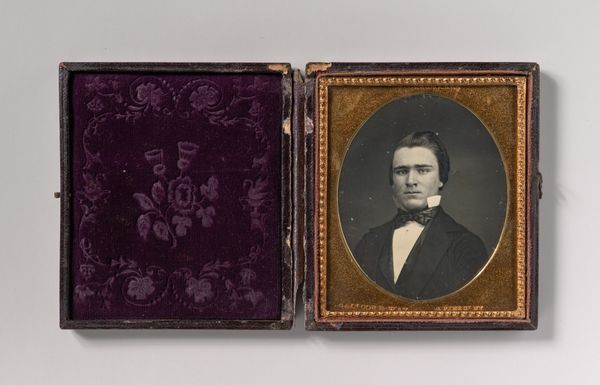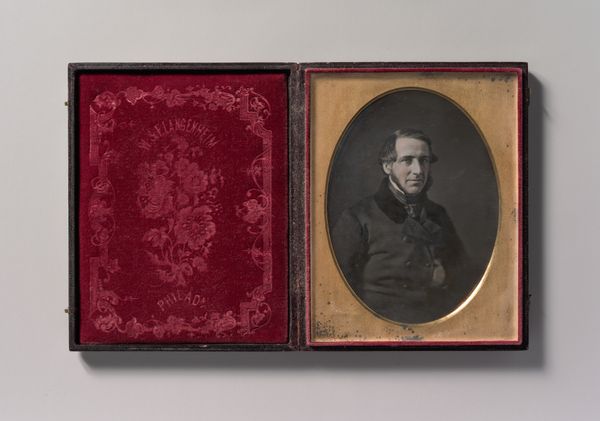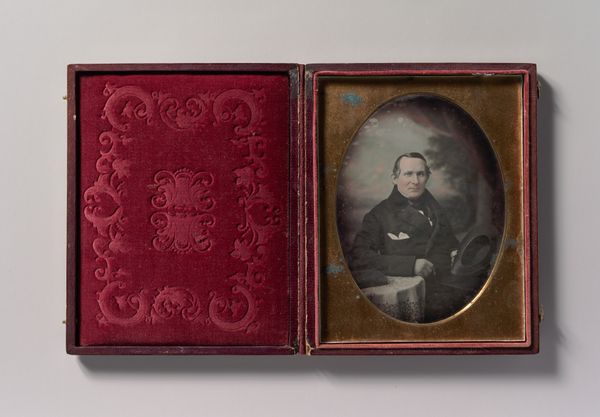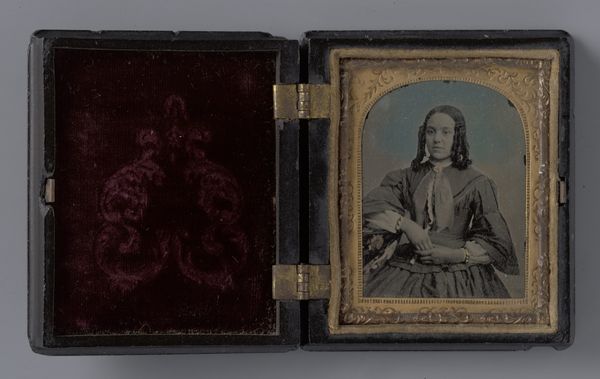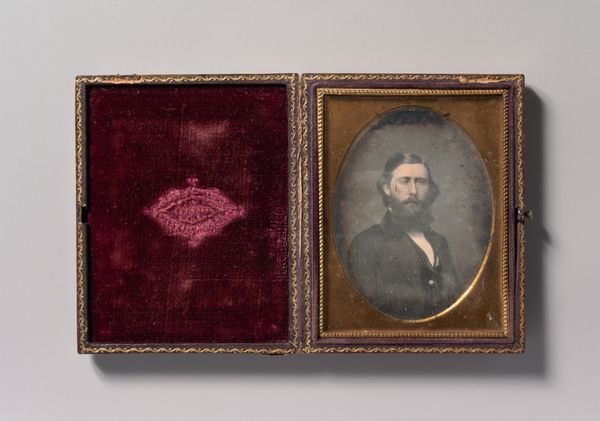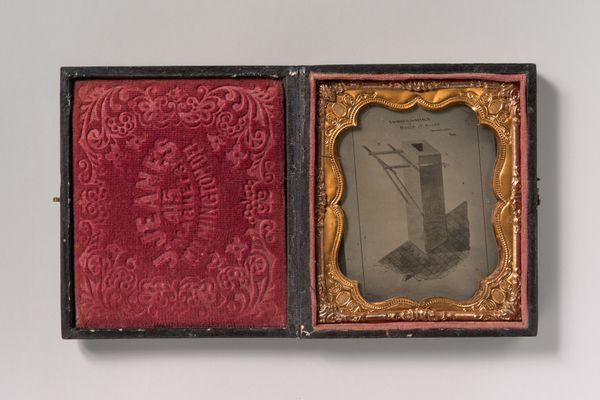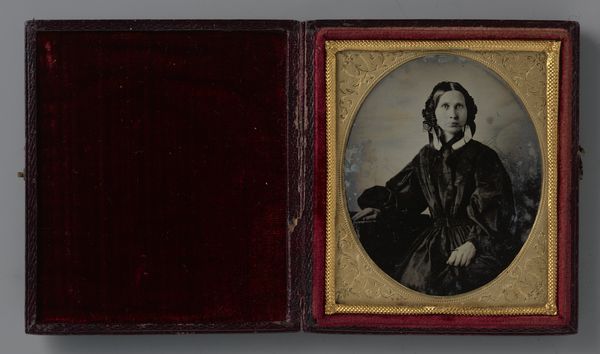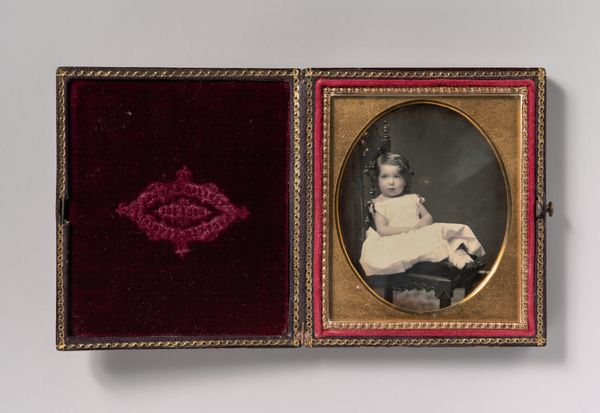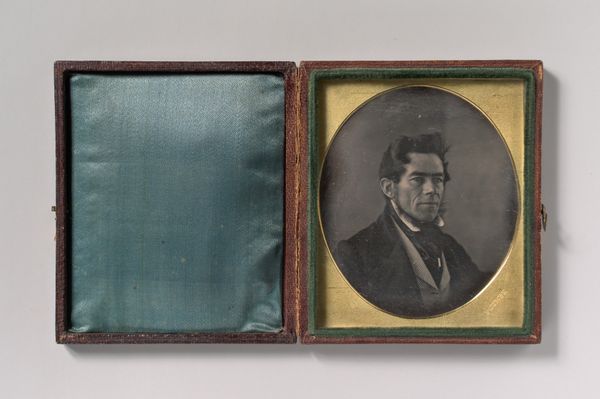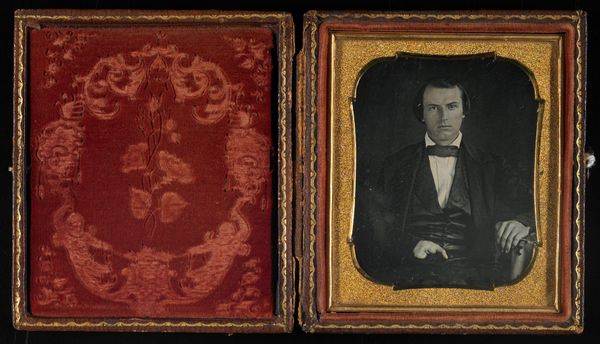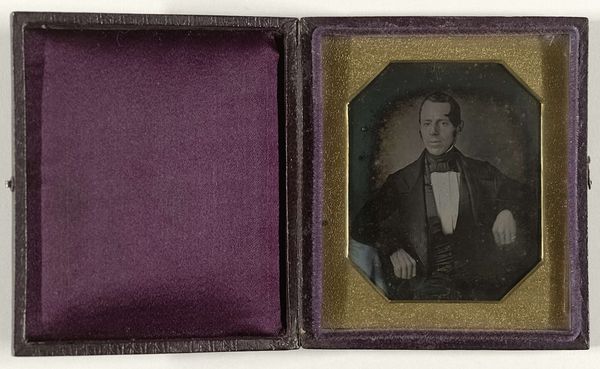![[Seated Man in Floral Vest] by W. & F. Langenheim](/_next/image?url=https%3A%2F%2Fd2w8kbdekdi1gv.cloudfront.net%2FeyJidWNrZXQiOiAiYXJ0ZXJhLWltYWdlcy1idWNrZXQiLCAia2V5IjogImFydHdvcmtzLzNjMzNjNTgzLTFlMmQtNGU5Zi05NjM2LWIzOGMxYmZiYzg3OC8zYzMzYzU4My0xZTJkLTRlOWYtOTYzNi1iMzhjMWJmYmM4NzhfZnVsbC5qcGciLCAiZWRpdHMiOiB7InJlc2l6ZSI6IHsid2lkdGgiOiAxOTIwLCAiaGVpZ2h0IjogMTkyMCwgImZpdCI6ICJpbnNpZGUifX19&w=3840&q=75)
daguerreotype, photography
#
portrait
#
daguerreotype
#
photography
#
romanticism
#
decorative art
Dimensions: Image: 6.8 x 5.6 cm (2 11/16 x 2 3/16 in.) Plate: 8.3 x 7 cm (3 1/4 x 2 3/4 in.) Case: 1.7 x 9 x 7.9 cm (11/16 x 3 9/16 x 3 1/8 in.)
Copyright: Public Domain
Curator: Here we have a daguerreotype from the 1840s or 50s, currently held at the Metropolitan Museum of Art. It's a portrait attributed to W. and F. Langenheim, titled "[Seated Man in Floral Vest]". What strikes you immediately? Editor: The way the sitter's floral vest seems to dominate the image. In the almost monochrome setting, the vest becomes this beacon of flamboyant expression. It stands out more than his face even, pulling you in to this question of masculine display and status. Curator: It’s a fascinating juxtaposition. These early photographs were powerful tools of self-representation, and in America particularly, there was a drive toward democratization in portraiture. Editor: Right. He seems to be announcing himself as someone of cultivated tastes. The floral vest is almost like a visual claim—a badge of belonging to a certain societal tier. Did floral patterns hold a specific meaning during that era, connected to wealth, maybe? Curator: Potentially. The mechanization of textile production definitely made more complex patterns like these accessible to the middle classes, which fueled both their desirability and subsequent anxiety around them among elites. Floral imagery also played a huge role in popular romantic literature, suggesting themes of pastoral virtue. Editor: Ah, I see how that visual connection to idealized nature feeds in. I’m drawn to the almost uncanny stillness of the image. These early photographic processes demanded complete stillness from the subject. Curator: Indeed. This technical constraint shapes how we understand their agency. Was his pose performative, dictated by the photographer, or did he collaborate to craft this specific presentation of self? Early photographic portraits became battlegrounds of social meaning. Editor: So, while the floral pattern could symbolize many things, what he chooses to reveal about himself is ultimately a social declaration, playing into emerging definitions of the American male identity. Curator: Exactly. And these images were reproduced and distributed widely, further democratizing social expectations and visual communication, something photography continues to shape profoundly today. Editor: It really makes you consider what aspects of identity we choose to broadcast or hide within each image, even now. The symbolic weight behind visual choices. Curator: Precisely. A single image, especially one surviving from so long ago, gives a whole narrative structure of visual meanings and expectations.
Comments
No comments
Be the first to comment and join the conversation on the ultimate creative platform.
